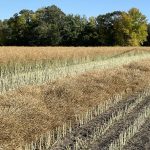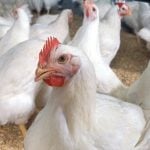An unprecedented amount of unharvested canola left in prairie fields last fall could mean a serious volunteer headache for farmers this spring.
Aggravating the problem is that 80 percent of the 860,000 acres of unharvested canola are herbicide tolerant, and much of that is Roundup Ready.
“Fifty percent of all canola grown in Western Canada last year was Roundup Ready and that makes controlling volunteers an issue for producers … but it’s not one that can’t be solved,” said Hugh Beckie, a University of Saskatchewan research scientist and farmer from Kenaston, Sask.
Read Also

Trade war may create Canadian economic opportunities
Canada’s current tariff woes could open chances for long-term economic growth and a stronger Canadian economy, consultant says — It’s happened before.
Other University of Saskatchewan researchers have found that six percent of canola seeds fall to the ground during harvesting, largely the result of shattering.
That leaves about 3,000 viable seeds per sq. metre on the ground.
The next spring, even after spraying with MCPA herbicide, as many as 14 volunteer plants per sq. m survive.
Even if they don’t germinate the first year, many seeds are still viable in subsequent years.
The losses already range from nine to 56 times the seeding rate and in the spring of 2003 “it could be anybody’s guess how many viable seeds will be out there, but it will be a lot,” Bill Greuel of Saskatchewan Agriculture told a Canadian Wheat Board herbicide tolerant crops conference in Saskatoon last week.
How farmers deal with unharvested canola this spring will help determine how many volunteers result from the over-wintered swaths.
“Whether or not producers are able to combine the crop, there will be losses to shattering and rodents,” Greuel said.
“It will make an already interesting problem a lot more so.”
Even in the third year, volunteer plants can be found in clay soil at a rate of 0.2 per sq. m no matter what type of tillage is used, Greuel said.
“That may not sound like much, but that’s 25,000 viable seeds germinating per acre in that third year.”
Beckie said that when producers introduce a new herbicide tolerant crop to their farm, they also need to think of it as a herbicide tolerant weed that will need to be controlled.














